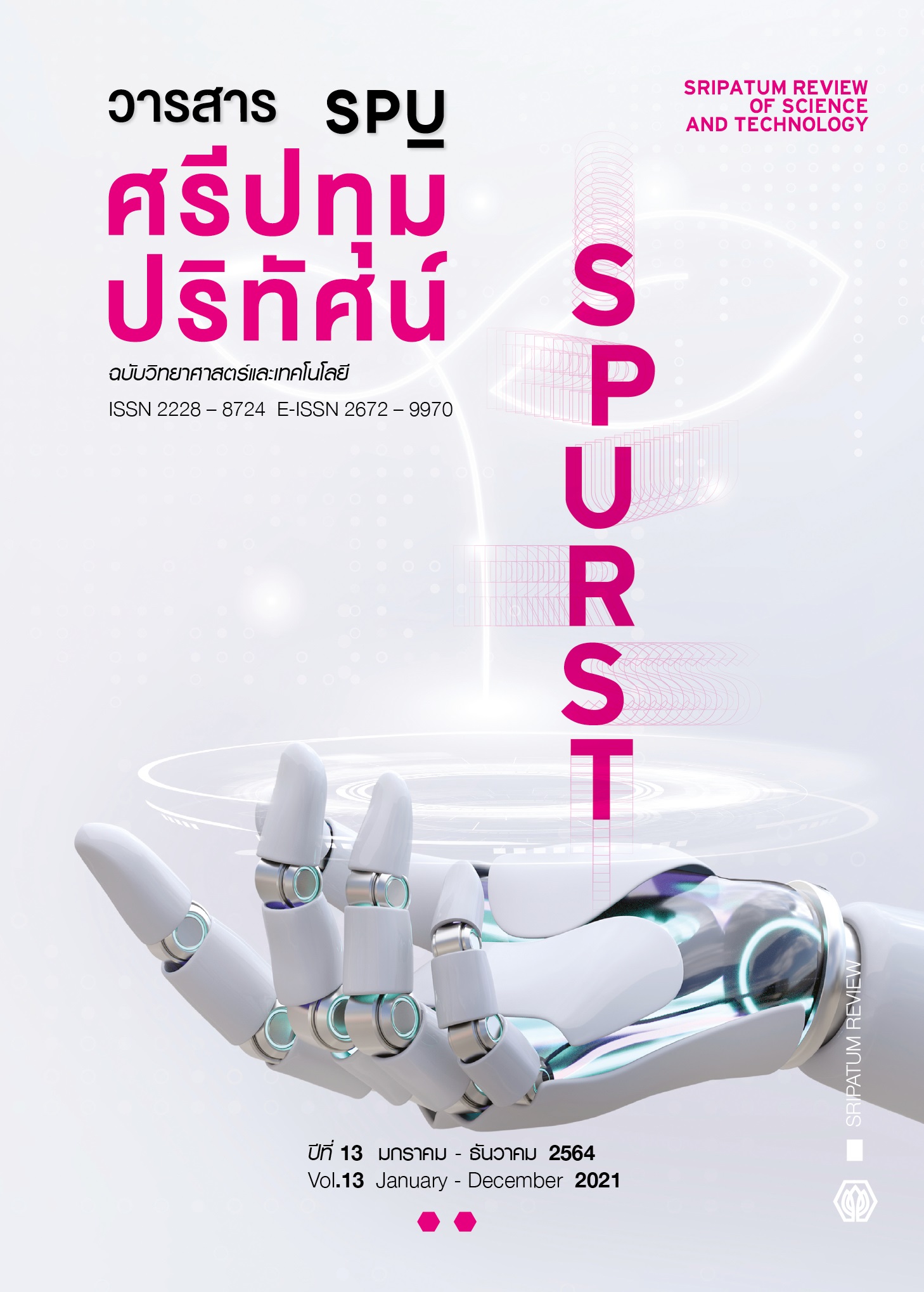Development of Black Powder from Pyrolysis Process for Latent Fingerprint Detection
Main Article Content
Abstract
This research aimed to develop dust for the detection of latent fingerprints using carbon powder produced from the pyrolysis of tires and to compare the detection of latent fingerprints between the developed dust and the standard powder imported from the United States and Japan. This study was done through experimental research by evaluating the results from the detection of latent fingerprints on five types of smooth and non-porous surfaces (glass, a plastic cup, a plastic file, the back of a CD, and a soft drink can) and the latent fingerprints were analyzed for a number of special features with AFIS. The results showed that the carbon dust from tires had a particle size of 45.9 ± 3.49 µm, which was close to the commercially available powder particles imported from Japan (particle size of 39.5 ± 0.56 µm). In addition, the clarity of latent fingerprints generated from tire carbon powder on five types of surfaces, were plastic cup surface > soft drink can > the plastic file > drinking glass > and the back of a CD, respectively.
Article Details
References
Amornmongkol, P. (2009). The Development of Fingerprint Powder for Forensic Use. Thesis of the Degree of Master of Science Program in Forensic Science. Nakhon Pathom: Silapakorn University. (in Thai)
Chanthanumat et al. (2019). Kinetic Study And Pyrolysis Of Palm Kernel Shell (PKS) And Palm Empty Fruit Bunches (EFB) For Bio-Oil Production. KKU Science Journal - Khon Kaen University, 47(3), 449 458. (in Thai).
Chaiheng, S. and Witchuwanich, W. (2019). The Latent Fingerprint Development by Using Spore of Ophioglossum pendulum L. on Different Surfaces. Journal of Criminology and Forensic Science, 5(1), 96-110. (in Thai)
Counter Crime Planning Division. (2020). Report on the results of the implementation of the Crime Suppression Plan of the Royal Thai Police for the Fiscal Year 2020 for the 4th Quarter (July - September 2020) and fiscal year 2020. Bangkok: The Royal Thai Police. (in Thai)
Jitkranka, S. (2008). From old tires Going into new alternative oil ... Thai people can do it. Energy Plus, 19, 10-14. (in Thai)
Krongthong, W. (2003). Preparation of powder samples for electron microscopy techniques. National Metal and Materials Technology Center, 210, 67-69. (in Thai)
Lee Henry. (1994). Crime Scene Investigation. Taiwan: Central Police University Press.
Sangkaew, S. (2012). Production and evaluation of fingerprint powder made from coal. Thesis of the Degree of Master of Science Program in Forensic Science. Silapakorn University. (in Thai)
Songnonlek, N. (2012). Development of latent fingerprint on non-porous surface by using turmeric powder. Thesis of the Degree of Master of Science Program in Forensic Science. Nakhon Pathom: Silapakorn University. (in Thai)
Sodhi, G. S., Kaur, J., Garg, R. K., and Kobilinsky, L. (2003). A fingerprint powder formulation based on rhodamine B dye. Journal of Forensic Identification, 53 (5), 551–555.
Thanasukarn et al. (2012). Introduction to Nano Safety for industry. Bangkok: Department of Industrial Works, Ministry of Industry. (in Thai)
Thongthammachad, R. and Witchuwanich, W. (2019). The Development of Fingerprint Powder Made from Black Rice Husk for Detecting Latent Fingerprints on Different Types of Surfaces. Journal of Criminology and Forensic Science, 5(2), 87 103. (in Thai)
Vandapac Company Limited. (2020). Polypropylene. [Online]. Retrieved December 23, 2020, from: https://sites.google.com/site/kaewphlastik/phlastik-pp-phx-li-phor-phi-lin-polypropylene. (in Thai)
Wiranarongkorn, K. and Arpornwichanop, A. (2015). Pyrolysis. Energy & Environmental, (42)241, 61 64. (in Thai)


